The elephant is the national animal of Thailand and bears spiritual and cultural significance in the country. For one, Ganesh or Phra Phikaned, is the elephant-headed God who is known to Thais as the Lord of Success and destroyer of evil and obstacles. As such, praying and making an offering to him is especially useful for people who are starting something new, like a new business, a journey, or a relationship. If you want to see the most famous Ganesh temple in Bangkok, it is located in front of the busy Centralworld in the central business district.
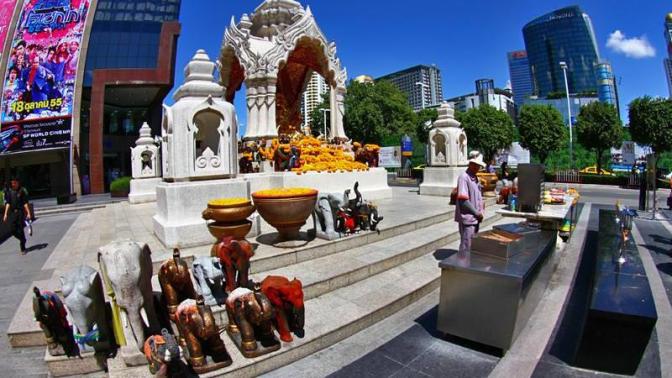
The common elephants on the other hand, have been long embedded in history as the ‘domesticated’ ones, or those that were used in the past to haul lumber, crops and carry weapons and people during wars.
Fast forward to now, after the commercial logging was banned, many elephants have found themselves working in elephant-based tourism across Thailand. Some of them are in trekking camps, carrying tourists on metal chairs on their backs going back and forth on established trails guided by their mahout. A number of them can also be seen in elephant shows in various parks and zoos. They are trained to paint, dance, do tricks, and carry people on their trunks for photos.
It’s not easy being an elephant
When I got to Thailand and before I knew better, going to an elephant show was something I thought was harmless and normal. They are extremely popular and everyone seems to patronize them anyway. So I went to see a show, and was amazed at their ‘talents’. I was carried by one with its trunk, thankfully I never considered riding on their backs.
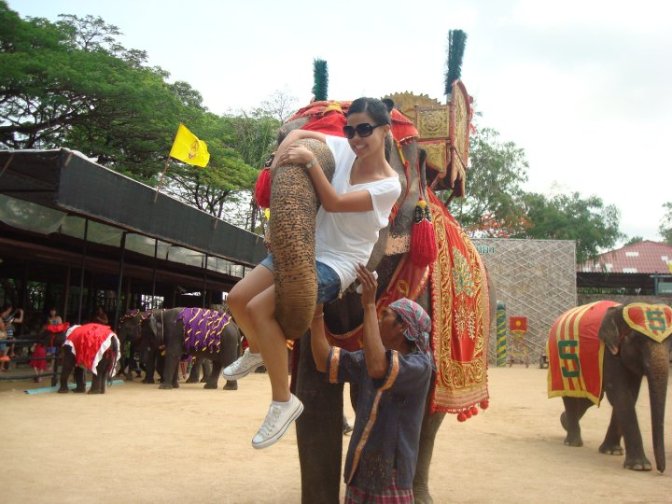
For many, especially for first-time visitors, riding atop them is a bucketlist item – a special once in a lifetime experience that should never be missed.
The Elephants’ Plight
The talents that they show when they paint, or play basketball, or when they carry people on their trunks or backs are not as beautiful as what happens behind the scenes.
One search on Google or Youtube about ‘Phajaan’ will show you what horror these elephants go through as babies so they can be tamed by humans. The hundred-year-old ritual of ‘crushing their spirits’ make them submissive to commands so they will allow people on their backs or perform their tricks in front of an audience. Honestly, I didn’t finish even one video, because it was too difficult to watch. It is sad and enraging. And they go through this – in the name of entertainment and tourism.
As crude as it may sound, I hope you step back and rethink before you make a decision of ticking elephant riding off your list. By avoiding elephant rides and shows, we can at least show strong support towards the end of this elephant cruelty.
How to have an ethical encounter
A better way of seeing and interacting with these animals is through an elephant sanctuary. Nowadays, it is heartening to know that more and more people in Thailand (and all over the world) are becoming aware of the grim truth these animals go through, and the statistics that show the diminishing number of elephants. There are only 2000-3000 left (about half of which live in the wild) from the 100,000 in the 1900s.
Many organizations like Elephant Nature Park in Chiang Mai have stepped up to provide a safe haven for these endangered species and rescue them from circuses or from their owners who lack the resources to care for them properly. The sanctuaries provide them with a home where they can be free, and just be elephants, for the remainder of their lives.
What we should look out for
I have long since wanted to go to the highly reputable Elephant Nature Park in Chiang Mai but because it is the most popular, it is always fully-booked. Now left with the many elephant sanctuaries that mushroomed in the last couple of years, how do we know we are supporting a real rescue centre?
My checklist is quite simple, really:
- There should be NO riding. Not on the back, not even on the neck. I know there have been debates about this, that riding on the neck is okay and it is the most natural way, but can we just not ride them at all?
- The mahouts should not use any bullhooks or nails. Bullhooks when used properly can guide an elephant, but often these bullhooks are misused and cause injury on the animal. If you see bloody wounds on their head, or armpits or mouth, the elephants are most likely being maltreated.
- Interaction with them should be as natural as possible – feeding, touching, walking with them briefly and bathing them. But not to the point that everything looks rehearsed and the elephants are just there as photo props.
- A smaller or lesser known elephant sanctuary that is not crowded. I am not actually concerned about us guests but more about the elephants doing the same routine for an x number of groups the whole day. In addition, I realise the limelight is on the bigger and more popular rescue centres, however, the smaller legit ones deserve the attention and support too.
I was seriously considering going to one centre in Kanchanaburi because of very good reviews online, but when I checked Instagram for their most recent photos, I was stunned to see their visitors on the back of elephants while bathing them in the river. There was also one video that showed a couple sitting, and their mahout standing on the back of one elephant. The latter was continuously hitting the elephant with what looked like bullhook to make the elephant splash water using its trunk, to the delight of the shrieking guests. I called them out on their FB page but one person who claimed to be a volunteer-supporter of the centre strongly denied and said I was looking at a different centre and that they just tagged them by mistake. Before I called them out, I compared their official photos on their site and the IG photos, and there’s no denying the similarities. I told her that and she just stopped responding.
Long story short, I crossed them off the list.
My Elephant Encounters: Elephant Haven, Kanchanaburi and Elephant Rescue Park, Chiang Mai
I have been to two elephant centres here in Thailand so far and I am happy to report that both are genuine and sincere in providing these beautiful animals the love, care and home that they truly need.
One of these is Elephant Haven in Kanchanaburi. I was there for my birthday last year and I couldn’t have chosen the best place to celebrate it.
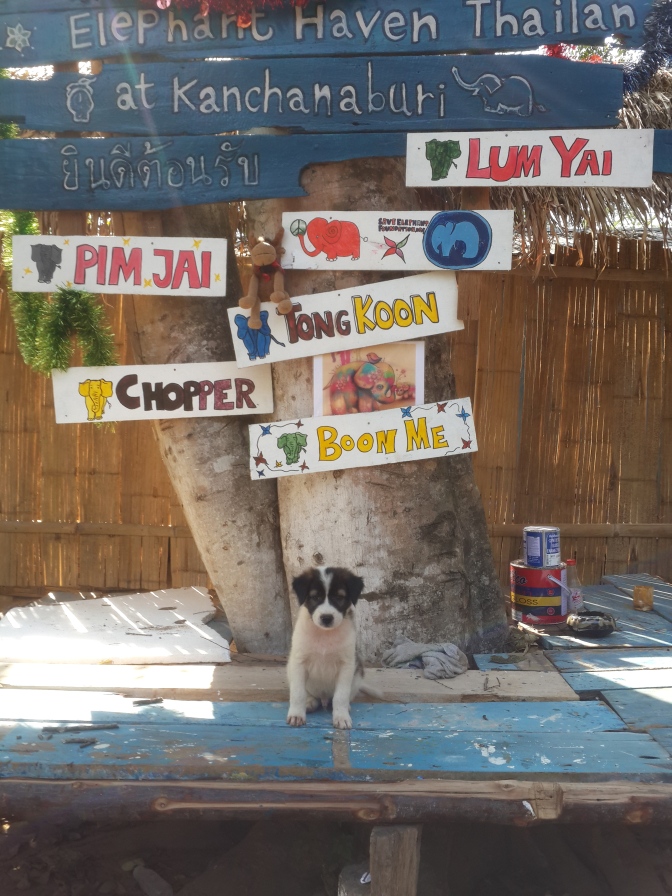
Elephant Haven is closely affiliated with ENP in Chiang Mai so you are guaranteed that they have the same ideals and standards. I think that this is the best choice if coming from Bangkok, as it is just a 3-hour drive. Also, since this centre is fairly new, there are not so many people that go there in a day. When I was there, there were only 6 of us for the full day visit + a family of 4 that had been staying there for a couple of days. They had 5 elephants at that time that looked very happy and well taken care of. They do have a routine but the animals do not seem to be forced into it. I think the structure was more for the visitors, so we know what we’re supposed to do while there.
After feeding them sticky rice balls and fruit, we were joined by their mahouts (no bullhooks or nails whatsoever!) to the woods for their daily walk and mud bath. Us guests just watched them quietly from a nearby hut while the guide explained where the elephants came from and how they were treated in trekking camps and circuses. This was where I learned that the howdah (or saddle) on their backs usually weighs at least 100 kilograms – now add 2-3 people sitting there and you can imagine how that becomes a burden to an elephant!
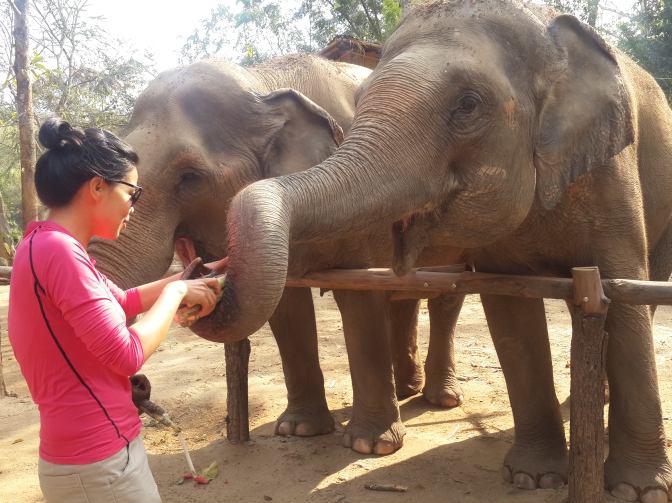
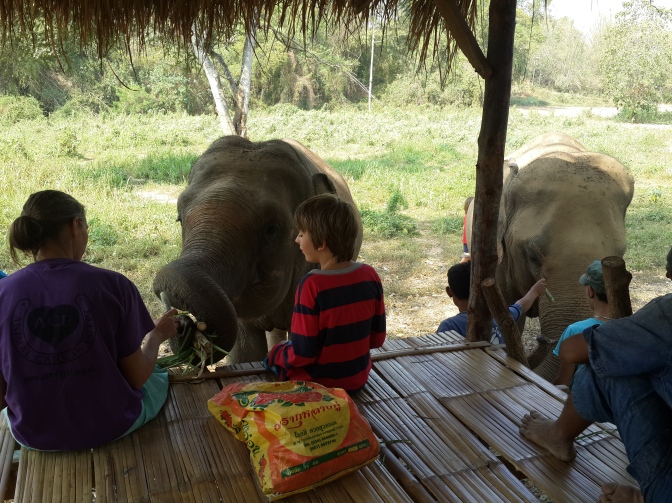
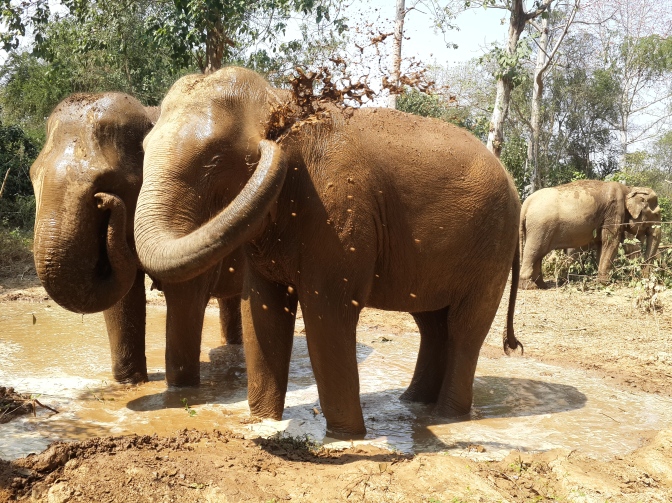
After about 20 minutes of mudbath, we walked with the elephants to the nearby river, where everyone happily cooled down. We were given lifejackets (some parts of the river were deep), buckets and brushes to scrub them with. There was absolutely no climbing or jumping on their backs. My phone was with one mahout who offered to get some candid photos of us. The mahouts didn’t force any of the elephants to do tricks or pose with us, which was a relief. Post-bath, everyone got out of the water and the elephants started showering themselves with dirt, which the guide later explained was their natural reaction to heat, as it cools them. And we thought they were playing a prank on us because we just scrubbed them clean!
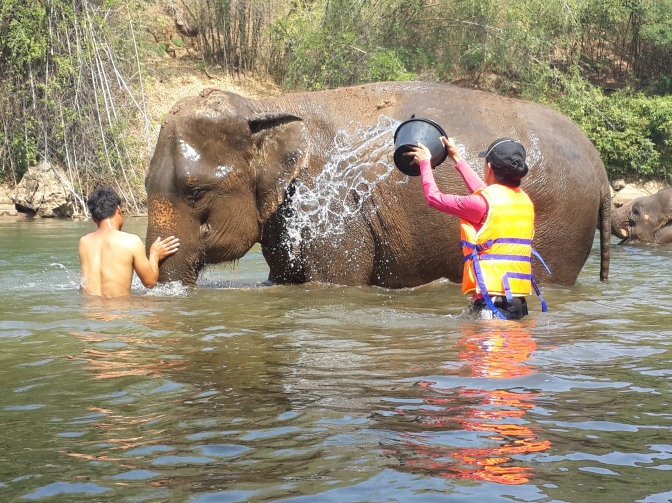

Their mahouts were all professionals and just walked alongside us guiding the elephants whilst the guide carefully explained everything we need to know about elephant welfare. They were also very patient and knowledgeable in answering our questions. One of them, an elderly who seemed to be the elephant whisperer would even sing to the elephants while walking and with just a whistle, an elephant that had gone off track would find its way back to the group.
Overall, it was a fun and meaningful day. I highly recommend it, even if it’s not your birthday! 😉
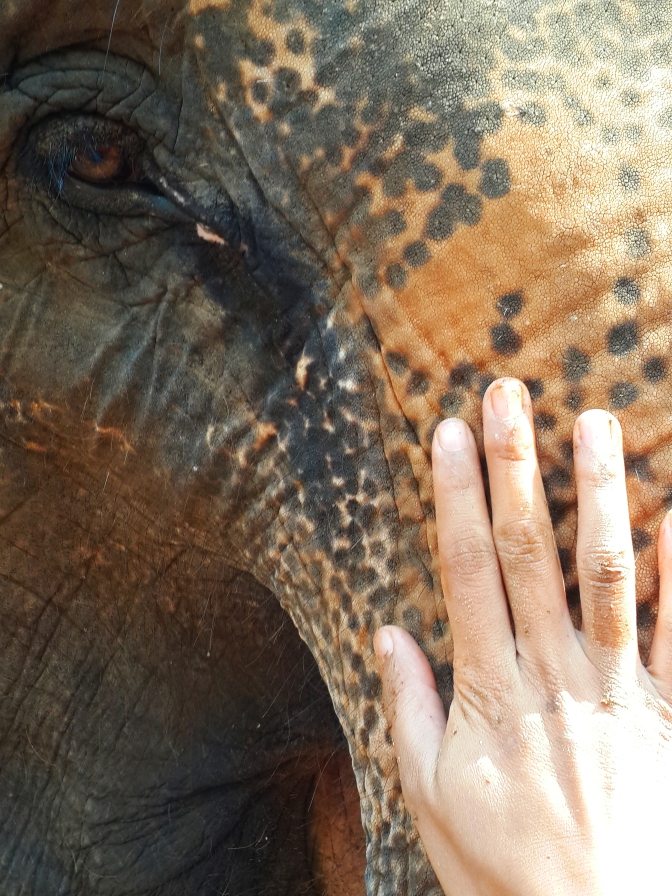
Last February, I got another chance to go to another centre, this time with some friends, in Chiang Mai. Again, on the dates we were there, we couldn’t get slots in ENP (that’s how popular they are) so we researched on other sanctuaries to go to. After reading reviews and looking up recommendations online, we went for Elephant Rescue Park, a small and new-ish rescue center that has three 3-year-old elephants at the moment. When we got there, the guide explained the history of their center and the owner, Khun Kid. It was refreshing to find out that all three baby elephants are permanently theirs and that the owner spent his own money (and even loaned from friends) to buy them from their owners who brought the animals to circuses to work. He intends to rescue more, so he is continuously saving money and raising funds so they could help as many poor, injured or mistreated elephants as they can. They are not only helping baby elephants but are extending to all that need it. In fact, when they first opened, they had rescued one adult elephant from a circus and took care of it. But it was terribly abused when they bought it from the owner that no matter how many times they sent it to the vet and even under close monitoring, it eventually passed away from health complications. The guide also confirmed that some elephant rescue centers just ‘rent’ elephants from their owners and pretend they are theirs so they could promote themselves to unknowing tourists.
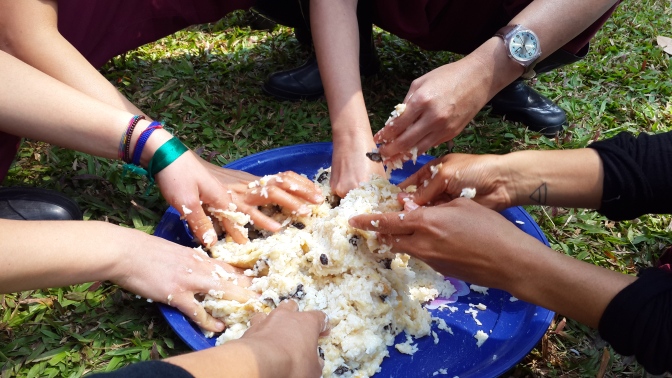
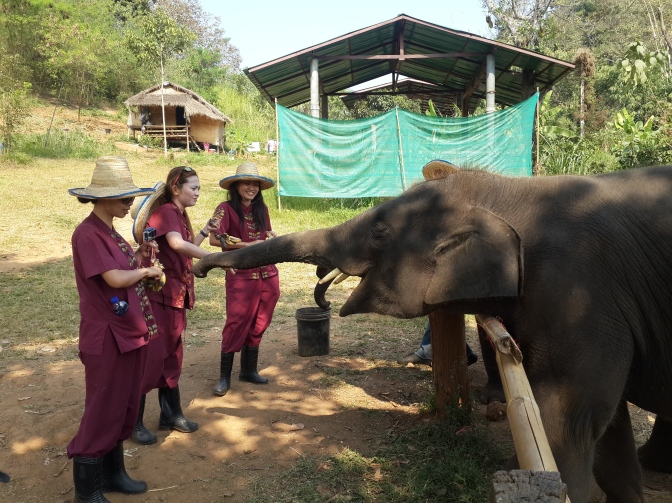
In their full day program, there are also routines such as feeding the elephants with rice tamarind balls, sugarcane (that we personally cut in the wild), and bananas. The interaction was more playful this time as the elephants are still considered babies, but they were not made to put on a show. We took them for a short walk (‘they took us’ is more accurate 😉 ) while constantly feeding them, and then gave them a bath in their small ‘pool’ afterwards. Again, there was no riding and we didn’t see any bullhooks from the mahouts. The protection and nurturing they receive from their young carers was incredible.
The full day program here is pricier than the others, but we were happy to shell out the extra baht for an experience like this and knowing that the money will go towards helping more elephants in the future.
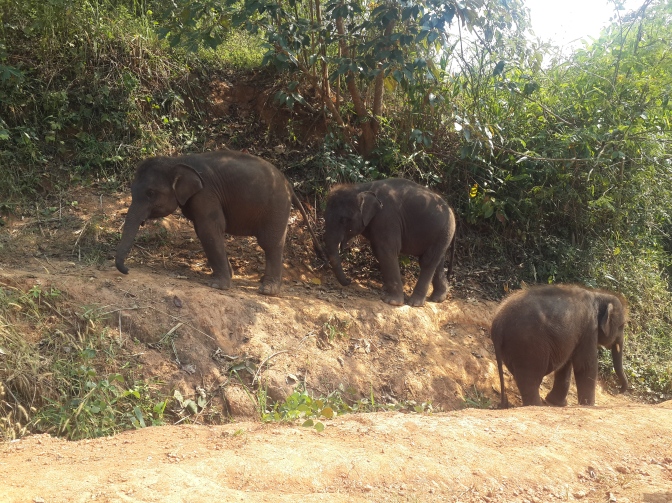
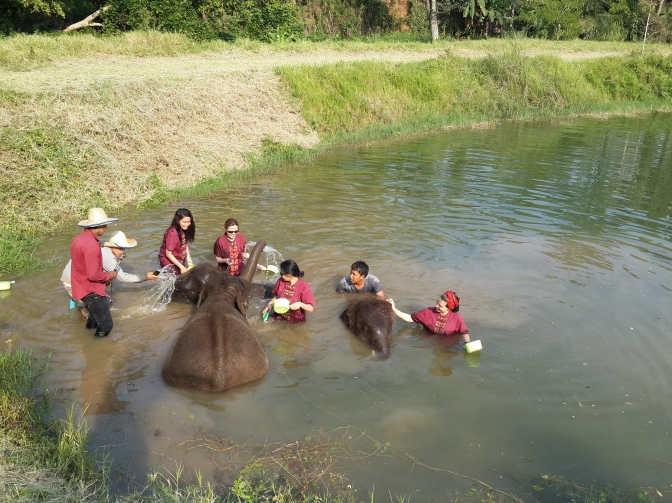
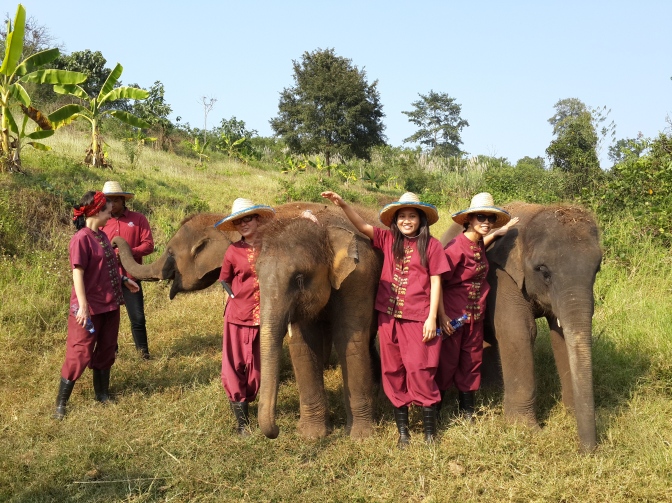
Having said that, this centre needs all the support it can get. If you can’t get into the bigger and more popular elephant centres in Chiang Mai, please consider going Elephant Rescue Park instead.
It really is up to us
I hope everyone makes an active choice in stopping and preventing any animal mistreatment or abuse – and continue spreading awareness that will make others change their minds and move things in the right direction.
Those 2 fulldays of interacting with these beautiful creatures were some of the best days of my life, and they’ve totally changed how I see elephants and how we treat all animals in general.
They say elephants never forget. But to have them allow us to walk with them, feed them, touch them and bathe them when they’ve previously been injured, mistreated and abused by humans brings to life the old proverb ‘to forgive is divine’.
Elephant Haven – ENP Kanchanaburi Project
Full day Program: 2,500 baht
Elephant Rescue Park, Chiang Mai
Full Day Program: 3,000 baht
Thailand, Sri Lanka and parts of India are full of elephants. In fact, in India, we have lived together with elephants for a long time.
LikeLiked by 1 person
Totally appreciate your post and how you are against tourist rinding elephants. I am in the same boat too. I am visiting Sri Lanka in a few months and will be visiting an elephant sanctuary. Looking forward to play with these gentle giants!
LikeLike
Thank you and I’m so excited for you! You’ll love them. 🙂
LikeLike
Thank you, thank you, thank you for talking about how to share experiences with elephants in a respectful, ethical way!!! So many people still just want to get a cheap ride on an elephant for Instagram, but I think the amazing day you shared with them was 100x better. It sounds incredible, and I’m dying to get to ENP or Elephant Haven 🙂
LikeLike
That’s right! I’d do this over and over again if I could. Thank you for dropping by! 🙂
LikeLike
Elephants are such intelligent, sensitive, beautiful animals -thank you for pointing out the systems of greed and abusive treatment that exist behind so many tourist programs.
LikeLike
Thanks for a great and conscientious post about interacting with wild life! There ARE ways to meet animals without cruelty. It looks like you and the elephants had an amazing experience.
LikeLike
Such a heartwarming story. I’m glad you are authentically looking for a meaningful experience with the animals. Thanks for all the great info. I will all of that into great consideration next time I interact with different animals while traveling.
LikeLike
I too (especially when young) was fascinated by elephants and at one time I wanted to adopt one, but my research made me think anything that brought lots of tourists to visit these magestic animals would just in some way hurt the elephants, so I bought little statues. I also like you couldn’t even finish the videos on how they train elephants, so incredibly cruel, it still shocks me why anyone would want to break a spirit of an animal or being of any type to control it.
LikeLike
Like us humans, elephants feel happiness, anger, grief and compassion. I hope more people become aware of these and have a change of heart when it comes to tourism. Thank you for reading this post, let’s spread the love! 🙂
LikeLike
I loved these creatures too much, and I am extremely sad about the way they undergo torture! I avoid these settlements altogether as such although I would want to spend time with them in a way that doesn’t harm them. Thanks for giving us an alternative to visiting elephants! Maybe I’ll try this next time!
LikeLike
I am completely against animal abuse and absolutely agree to support organizations that help in rehabilitating abused elephants. I had a similar experience in Cambodia.
LikeLike